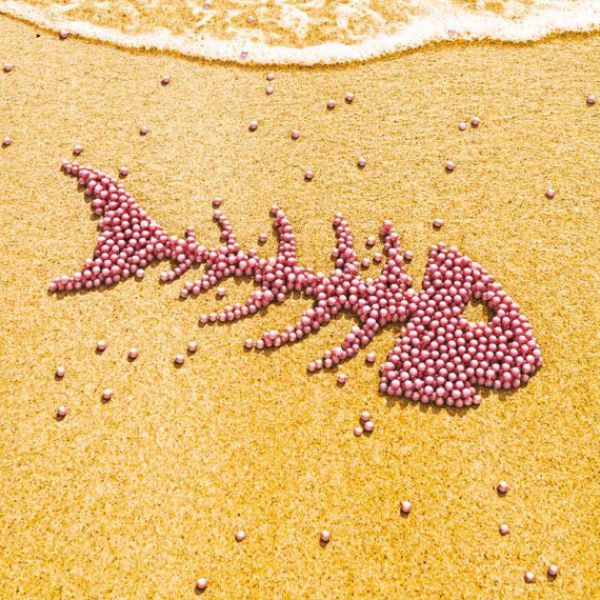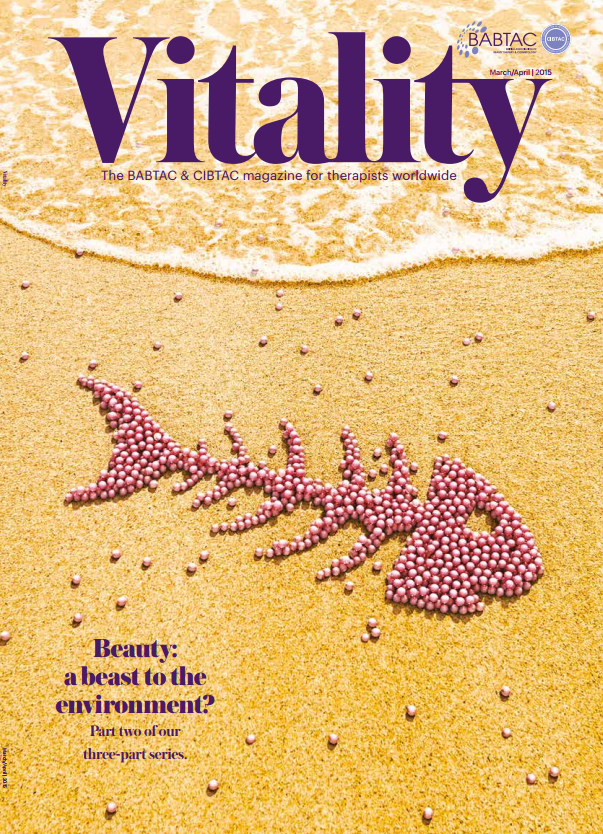The problem with microbeads in the beauty & cosmetics industry
Microbeads are back in the news again this week, as parliament's Environmental Audit Committee called for a global ban on the use of microbeads in cosmetics, following the example set by Canada, the USA and the Netherlands which have already introduced a ban.
Evidence of the damaging effect microbeads have on the environment has been around for almost a decade (according to The Guardian). We raised this issue back in our March/April 2015 issue of Vitality, and again in 2016 after the USA extended the Microbead-Free Waters Act of 2015 from the state of California to cover all US states.
Why are microbeads used in cosmetics?
The patent for using microbeads as an exfoliant in cosmetics was registered in 1972 and they gradually became common throughout the skincare industry. Many manufacturers turned to them instead of using natural exfoliants, such as coconut husk, in their products. The reason was simple: plastic is far more cost effective when it comes to making products than its natural counterparts. The cost of disposal is another matter.
What’s the problem with using microbeads in cosmetics?
Plastic is now commonly used in everything from exfoliators to cleansers, toothpastes to sprays. As the plastic breaks down it gradually becomes smaller until the pieces are microscopic. When it's washed down the drain that microscopic plastic makes its way into the water waste system. The plastic is broken down through UV exposure, wave action, hydrolysis and oxidation, and mechanical grinding. The ocean currents then transport it around the planet. Any industry that uses plastics is probably contributing to this soup, but the beauty industry has been singled out for being the source of one particularly problematic plastic pollutant – microbeads.
Microbeads are so small – some around the size of a grain of sand – that they cannot be sifted by the filtration systems at sewage works. As a result, when the treated water is released back into the watercourse, the microbeads go with it. Wherever microbeads are discharged, eventually they find their way to the sea where marine creatures eat them. According to Flora and Fauna International, microbeads have been found in seabed filter feeders including lugworms and mussels; from there they have made their way up the food chain into fish and sea birds.
However, that is not the only problem. Plastic is designed to last and although it breaks down into microscopic particles, researchers have yet to see it disappear completely. Meanwhile, each microscopic particle of plastic acts as a magnet for pollutants – including known carcinogens – and microbes which change the nature of the plastic and cause it to sink to the seabed where it reduces the amount of oxygen available to plants and other organisms and becomes embedded in the seabed, shoreline, and plant matter. As a result, clean-up operations become virtually impossible.
Why are microbeads bad?
A study led by Mark Anthony Browne, of UC Santa Barbara’s National Centre for Ecological Analysis and Synthesis, found that the pollutants present on microbeads mistakenly consumed by lugworms made their way into the animals’ tissues. Lugworms were chosen for the study because the sediments they create support a range of flora and fauna, so governments around the world use the health of lugworms as a pollutant indicator. Pollutants that made their way into the animals included nonylphenol, which suppressed immune function by more than 60%. Triclosan diminished the ability of worms to engineer sediments and caused mortality, each by more than 55%. Previous studies found that triclosan, an antibacterial additive, also alters hormone regulation. These chemicals are known as priority pollutants, chemicals that governments around the world have agreed are the most persistently bioaccumulative and toxic. Previous work conducted by Browne and his colleagues showed that about 78% of the chemicals recognized by the US Environmental Protection Agency are associated with microplastic pollution.
Flora and Fauna International’s marine plastics projects manager Tanya Cox says: ‘There is a mounting body of scientific evidence to confirm suspicions about the impacts of microplastics (and the chemicals associated with them) on marine life. The evidence also raises real concerns about the transfer and accumulation of these toxicants up the food chain and the potential implications for human health.’
Find out more about the Environmental Audit Committee's call to ban the use of microbeads.
Original article published in March/April 2015 Vitality magazine.


